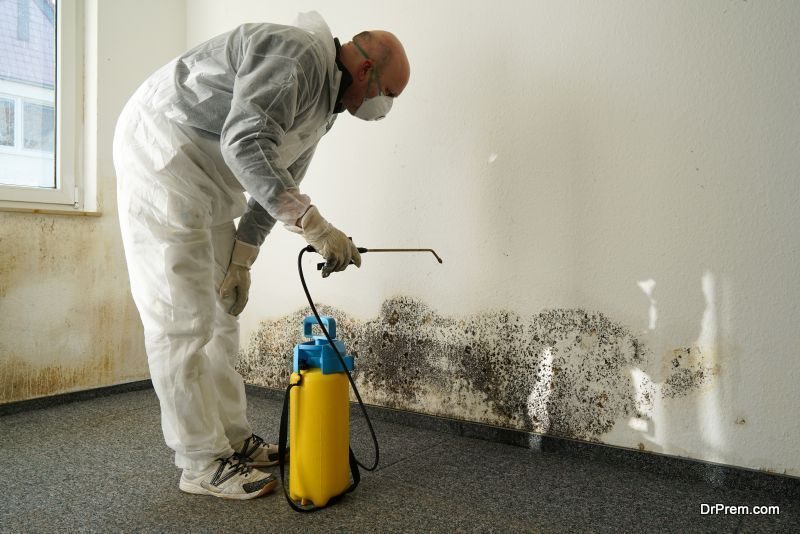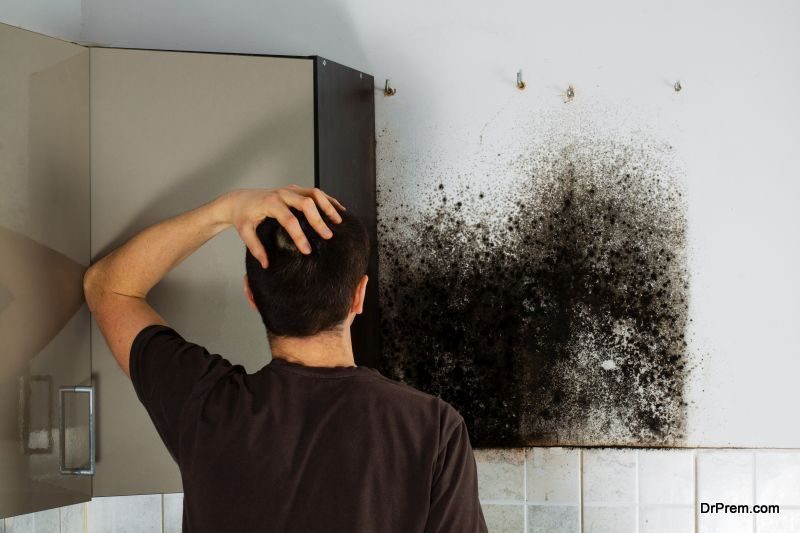Mold is found everywhere and grows where there is moisture, but mold in your home is not safe. It can enter your home through windows, pipes, and the heating, ventilation, and air conditioning (HVAC) system. Mold spores from outside can attach to clothing, shoes, and pets as they enter the home. It can cause health issues like a sore throat, skin and eye irritation, and people who suffer from allergies may experience more severe health concerns.
The good news is that there are things you can do to prevent mold from getting into your home, and things you can do if mold takes hold of your home.
Tackle Wet Areas Immediately
 Mold needs moisture for it to grow, so areas that are wet will easily attract mold. Dry wet areas as fast as possible. For example, if your basement floods, get that area dry as soon as possible. You can rent a sump pump locally, but getting rid of all the water and drying the area is critical. Wet or damp areas dried within 24 to 48 hours typically will not grow mold.
Mold needs moisture for it to grow, so areas that are wet will easily attract mold. Dry wet areas as fast as possible. For example, if your basement floods, get that area dry as soon as possible. You can rent a sump pump locally, but getting rid of all the water and drying the area is critical. Wet or damp areas dried within 24 to 48 hours typically will not grow mold.
Check for Leaking Pipes
Mold prevention is important and checking for leaking pipes will keep you a step ahead of mold. Look for damp areas and water stains around your tub, sink, refrigerator, and dishwasher. Pay attention to pipes in low traffic areas like in the utility room in the basement. Most water heaters are found in utility rooms, so look for any drips or pools of water. Any leaks or water damage from the water heater must be addressed immediately to prevent mold. A HVAC professional can help you with repair needs.
Monitor Humidity Levels
High indoor humidity levels give mold an environment to grow, so maintaining humidity levels between 30 percent to 55 percent is ideal. In fact, the U.S. Environmental Protection Agency recommends indoor humidity levels below 60 percent. Some signs that your indoor humidity levels are too high are condensation on the windows and walls. If you find condensation, dry the area immediately, but you’ll need to identify the source of the problem. You can purchase an indoor humidity monitor at your local hardware store.
Evaluate Your HVAC System
Proper ventilation will help keep moisture levels down in your home. Inspect your air conditioning unit to make sure that it is working properly and check for any leaks. Check the condensate drainpipe to make sure that it is dripping properly. Also, pull draperies away from HVAC registers because they can trap moist air against the walls.
Use a Dehumidifier
Using a dehumidifier is a way to remove extra moisture from the air to prevent mold. You can purchase a whole house dehumidifier or a portable one to help with problems areas. Which one you choose depends on your needs. For example, if you live in a high humidity area, then the whole house dehumidifier is your best choice.
There are many options to prevent mold and eliminate it, but what solution you choose depends on many factors. Take the time to understand your climate as it is a major factor that will drive what steps you need to take to prevent mold.
Article Submitted By Community Writer





